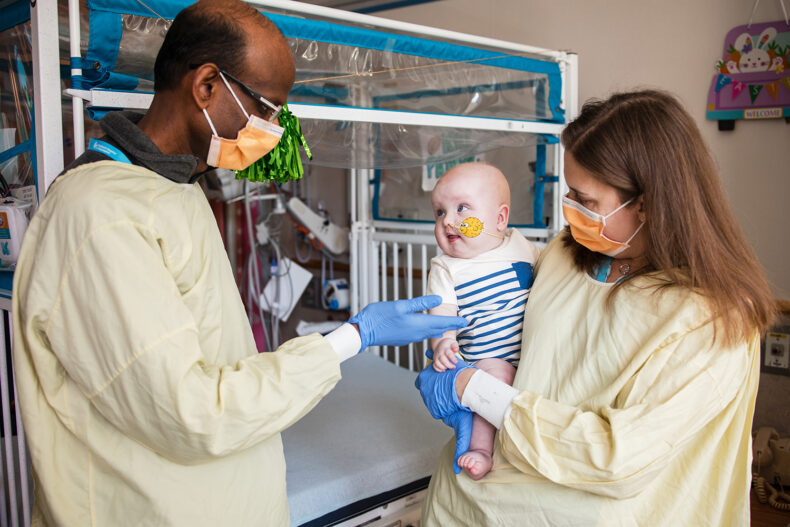Drs Musunuru and Ahrens-Nicklas holding KJ after infusion of the CRISPR therapy. Credit: Children's Hospital of Philadelphia
Talking about genetic engineering and those technologies we call “short palindromic repeats grouped and separated at regular intervals,” or CRISPR, by which we mean a series of the latest generation of biotechnologies that allow the manipulation of the DNA of living things to achieve changes in the genetic code.
The world's first in vivo human patient would be a baby just a few months old, suffering from a rare metabolic disease, treated with a new personalized therapy based on genetic editing. The little patient reportedly underwent three infusions between February and April and has already shown some improvement without serious side effects, although lengthy monitoring will be needed to fully verify the outcomes of the therapy.
The finding was published in the New England Journal of Medicine by a team from Children's Hospital of Philadelphia and Penn Medicine in the United States.
The targeted therapy was developed in just six months and was delivered via lipid nanoparticles to the liver, infused in three doses in February, March and April 2025.
“Although KJ will need to be monitored closely for the rest of his life, our initial results are quite promising,” says Dr. Rebecca Nicklas, study director and associate professor of pediatrics.
Genetic engineering is already being used in many areas such as agriculture to develop plants that are more resistant to disease and pests. These technologies also intervene in the elimination of pests themselves and in order to render pest insects such as mosquitoes harmless, with a view to eliminating malaria.
This, at least, is what the pharmaceutical companies and universities engaged in this kind of research, which involves enormous interests and impressive capital, claim. Power over genetics is palatable and dangerous in a world based on often disproportionate and covert power relations. This is also why bioethical issues weave reservations toward these methods that can profoundly transform not only the living things directly involved but the food chain, the balances of human and non-human populations, and ecosystems.
